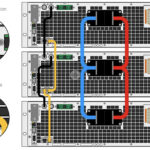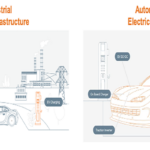By EA Elektro-Automatik At its core, a power supply is an electrical device that supplies electric power, a combination of voltage and current, to an electrical load, such as a computer, appliance, consumer electronics, or a battery charger, to name a few. Since the primary use of a power supply is to convert electric power […]
Featured
What’s the difference between cantilever and disk bimetallic thermal control devices?
The physical structure of the bimetallic element that provides thermal control is the difference between cantilever and disk bimetallic thermal control devices. This article begins by reviewing how bimetallic structures are made and operated. It then looks at how they are implemented in cantilever and disk thermal control devices. Two dissimilar metals are joined together […]
What are the primary applications for bimetallic thermal control devices?
Bimetallic thermal control devices are used primarily for temperature control, over-temperature protection, temperature sensing, and thermal fusing. They are also available in an equally wide range of package styles and are used in a wide range of industries, from consumer to industrial and military/aerospace. Some carry the full load current, while others are designed to […]
FAQ on using electricity to generate heat: part 2
Electrical energy is often used to generate heat via various basic principles of physics. Part 1 looked at the three ways electrical energy and power are used to create heat, using resistive, inductive, and dielectric-based principles. Dielectric-based heating Q: What is dielectric heating? A: Dielectric heating is non-intuitive, hard to grasp, and the contradiction of […]
FAQ on using electricity to generate heat: part 1
Electrical energy is often used to generate heat via various basic principles of physics. Every engineer knows about heat, an omnipresent companion to nearly all electrical, mechanical, and chemical processes. In some cases, this heat creation is intentional and desirable; in others, the heat is unavoidably a consequence of normal operation and is detrimental. This […]
How soft switching and SiC devices improve power conversion
By Mike Zhu, Qorvo Soft switching in DC-DC converters reduces energy loss. SiC transistors allow for higher switching frequencies and, thus, smaller magnetics, which reduces heat. Efficiency and power density are both essential factors in the design of power converters. Every contributor to energy loss generates heat that needs removal by costly and power-hungry cooling […]
The why and how of matched resistors: part 2
Paired resistors with low-temperature drift are critical to many precision analog circuits. The previous part discussed the need and “why” for matched resistors, as well as errors due to tolerance and TCR. This section transitions to their physical embodiment and looks at the “how” of obtaining needed matched resistors to minimize errors, temperature-related effects, and […]
Upcoming EE Training Day: optimizing thermal performance and system design of AI datacenter servers
This webinar will be held on May 16th, 2024, at 2 pm ET. As the demand for AI/ML tasks increases, effective thermal control within data centers becomes essential. This webinar will explore advanced thermal regulation techniques crucial for maintaining optimal performance amidst rising thermal pressures. It will also examine inventive cooling methods crafted to uphold […]
The why and how of matched resistors: part 1
Paired resistors with low-temperature drift are critical to many precision analog circuits. Achieving high performance, precision, and consistency in an analog signal chain requires attention to subtle details. In many cases, these details include the absolute accuracy of passive components such as resistors and the more subtle effects on component characteristics due to aging, mechanical […]
Increasing voltage demands unleash opportunities for SiC devices
By Didier Balocco, onsemi The trend towards higher voltages opens new opportunities for design with Silicon Carbide. With its higher electron mobility, lower losses, and ability to work at higher temperatures, the case for silicon carbide (SiC) devices in challenging power applications is widely accepted. While the benefits of silicon are significant in key applications, […]











